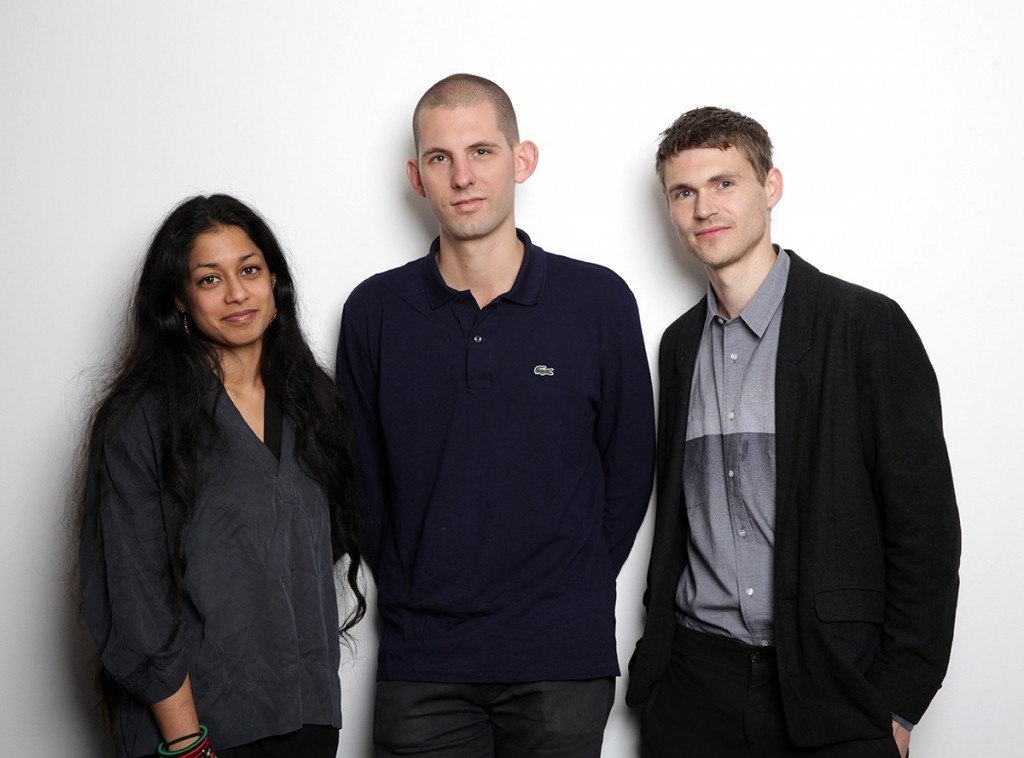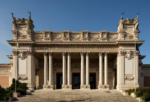15. Mostra Internazionale di Architettura – Home Economics

La Gran Bretagna presenta il progetto Home Economics.
Comunicato stampa
The British Council presents the exhibition Home Economics in the British Pavilion at the15th International Architecture Exhibition – La Biennale di Venezia from 28 May to 27 November 2016. Home Economics responds to the Biennale Architettura 2016 curator Alejandro Aravena’s theme Reporting from the Front by tackling the frontline of British architecture: the home. The curators, Shumi Bose, Jack Self and Finn Williams, were chosen following an open call organised by the British Council and have invited established and emerging artists, architects and designers to produce immersive 1:1 environments, which challenge the status quo and propose new models for the home.
Home Economics asks questions of British society and architectural culture that have come about as a result of changes in patterns of everyday life. The exhibition unfolds through a series of five architectural propositions, designed around incremental amounts of time: Hours, Days, Months, Years and Decades. Each room designer has been asked to propose architectural responses, rather than solutions, to the conditions imposed on domestic life by varying amounts of occupancy, and each response inhabits one of the five rooms in the British Pavilion.
THE EXHIBITION
Visitors approaching the British Pavilion are welcomed by an over-sized Georgian panelled door. To prevent the spread of plague, Queen Elizabeth I forbade families from sharing homes by saying “each must have their own front door”, a decree that led to the advent of the terraced house and entrenched the importance of the front door in the British psyche. Black, glossy and monolithic, the Home Economics front door dominates the central axis of the Giardini as a monument to the British home, inviting visitors to explore the different environments.
Inside the Pavilion, each proposal is realised as a full-scale model, allowing visitors to inhabit an idea rather than reading the specialist tools of the architectural discipline, such as plans or scale drawings.
Hours – Jack Self with Shumi Bose and Finn Williams
The curators of the British Pavilion at the 15th International Architecture Exhibition – La Biennale di Venezia. Their individual practices run across teaching, planning, developing policy, designing, writing, editing and curating.
The central interior space presents a new kind of shared domestic environment, restructuring the current requirements for ‘communal amenity’ in residential development. Cross-referencing research on how contemporary Britons use their homes and policies dictating minimum standards of space, the proposal reimagines sharing as potential luxury, rather than as a compromise.
The room is dominated by two new pieces of furniture: modular daybeds arranged in different configurations allowing the user to tailor the space for diverse forms of work, rest and play; and a large transparent communal ‘garderobe’, containing a selection of clothes curated by the fashion designer J.W. Anderson and common objects that future residents can share.
Days – åyr
åyr (Fabrizio Ballabio, Alessandro Bava, Luis Ortega Govela and Octave Perrault) is an art collective based in London whose work focuses on interiors, domesticity, internet culture and the city.
The second proposal in the sequence imagines a new type of personal and portable space, responding to the global domestic landscape that has been created by services like Airbnb. Reflecting our increasing engagement with social media, entertainment and virtual consumption, the proposal – more than clothing, but less than architecture – demonstrates ambivalence towards its short-term physical context.
The room contains two inflatable spheres that are designed to be easily personalised and transported to different domestic environments. Visitors are invited to climb inside and experience a familiar home away from home.
Months – Dogma and Black Square
Dogma is the office of Pier Vittorio Aureli and Martino Tattara. Aureli has a teaching practice with Maria Shéhérazade Giudici (Black Square) at the AA in London, looking at the political relationship between architecture, dwelling and the city.
The third proposal relates to short-term residencies in the context of temporary work contracts, study visas or student semesters. It imagines a new form of rent, where a flat monthly payment includes not only the use of space, but all domestic needs, tackling issues of privacy and household labour.
At the centre of the room is a ‘totem’, a two-storey utility core containing private spaces for sleeping, washing and cooking that visitors can enter and explore. The surrounding open plan areas are imagined as shared spaces for working and socialising, while services to cover cleaning, laundry and all the other domestic chores are included in the rent, making domestic labour history.
Years – Julia King
Julia King is a British-Venezuelan architect who works as a sole practitioner in the UK and India, and whose ongoing research looks at affordable domestic typologies.
The fourth space relates to the period of years and resists the assumption of home as an asset rather than a place to live. In this circumstance the cost of purchasing a house is minimised and, thanks to a custom-designed mortgage product, property speculation is opposed: home improvements are made for the purpose of dwelling rather than profiteering.
The approach to the room along a corridor frames the view of the most important element, the WC. This is a home designed from the bank’s perspective – a shell construction that strips out every cost not required by a mortgage lender, leaving just a roof, running water, electricity, a lavatory and basin. Visitors can collect a letter explaining the terms of this potential new mortgage product.
Decades – Hesselbrand
Hesselbrand is an architectural practice based in London and Oslo, founded by Martin Brandsdal, Magnus Casselbrant and Jesper Henriksson. Their research and design focuses on new forms of living and working for an unpredictable way of life.
Very long-term occupancies, suggesting intergenerational life and changing conditions of technological and physical capacities, are considered in the fifth and final space. The proposal is for a house that is defined by spatial conditions rather than specific functions, to allow for a different form of flexible space.
In this room there are no predetermined activities denoted by domestic fittings, just different qualities of light and dark, open and closed, private and public, wet and dry, and soft and hard surfaces. Mediating between light and dark is a large square bed designed, like the rest of the room, without traditional specifications of capacity or orientation, inviting visitors to recline and consider the need for adaptable, useful and timeless spaces.
The British Pavilion curators have made this statement:
“Britain is in the grips of a housing crisis. This is not only a failure of supply to meet demand, it is a failure of traditional housing models to accommodate new patterns of domestic life. The way we live is changing radically through time.
Home Economics is not about designing better versions of established housing models that are already broken. It is about designing new ideas for the home understood through the duration of occupancy. That is why we have chosen room designers and advisers who are working outside of traditional models, pushing boundaries and challenging the status quo. We believe that British architecture is not responding to the challenges of modern living – life is changing; we must design for it.”
Vicky Richardson, British Council Commissioner, Home Economics, said:
"Home Economics is an inspiring exhibition that approaches the debate about housing in an inventive and ambitious way. The curators have written a new brief for architects based on a far-sighted view of what the home is and will become. Their approach places architecture in a proactive position in relation to the housing crisis and I’m convinced it will contribute to creating a new and more constructive debate. We are delighted to continue the tradition of using the British Pavilion as a platform for research and ideas generation.”
Home Economics will be open to the public throughout the 15th International Architecture Exhibition – La Biennale di Venezia from 28 May to 27 November 2016, with press previews on 26 and 27 May.
VENICE FELLOWSHIPS
Building on the success of its inaugural Venice Fellowships programme in 2014, the British Council is working with RIBA Education and the curators to expand the steward-study programme and include young professionals and graduates from a range of creative backgrounds to participate alongside students from eight partnering architecture schools and arts institutions from around the UK.
Gwen Webber, Project Manager of the British Pavilion, said:
“We are thrilled to be able to offer 50 students, young professionals and graduates a chance to participate in a one-month steward-study programme in Venice. Fellows will conduct site-specific and archival research around topics that align with the novel curatorial approach taken in the British Pavilion exhibition, Home Economics. Contributing to this important international exhibition and to a wider research project provides Venice fellows with a unique cultural and educational opportunity.”
PARTNERSHIPS
Partnerships with diverse industry advisers – from campaigners to financial institutions, house-builders and planners – have informed each of the proposals, meaning that while bold and visionary, they are also grounded in reality. Advisers and collaborators include: Arup, AtelierOne, Fergus Henderson, Fjord, J.W. Anderson, Naked House, The Collective and PegasusLife. The exhibition design is by the architectural practice Hesselbrand, while London-based design studio OK-RM is responsible for the exhibition navigation and graphic identity. The graphic identity includes a series of artworks accompanying the exhibition, specially commissioned by the curatorial team and produced by OK-RM in collaboration with photographer Matthieu Lavanchy.
BOOK
A book is being co-published by The Spaces and REAL foundation to accompany the show, with photography of the exhibition, detailed plans and information about each room, and a series of essays by critics and experts on housing and architecture. The book will be on sale at the British Pavilion and through www.vfeditions.com.
BRITISH PAVILION EXHIBITION SPONSORS
Arup - www.arup.com
Forbo - www.forbo.co.uk
eldoLED - www.eldoled.com
iGuzzini - www.iguzzini.com
The Spaces - www.thespaces.com
The Vinyl Factory - www.thevinylfactory.com



